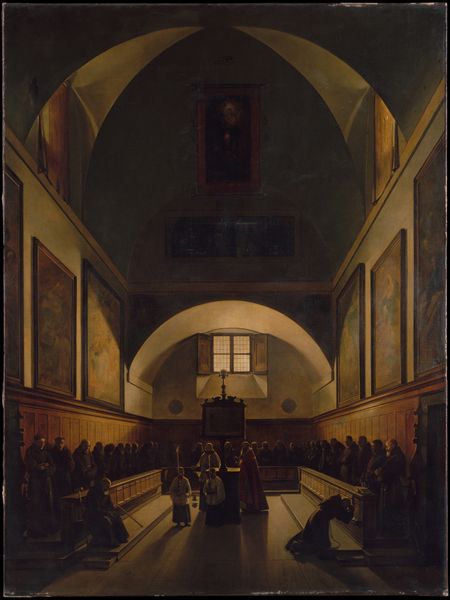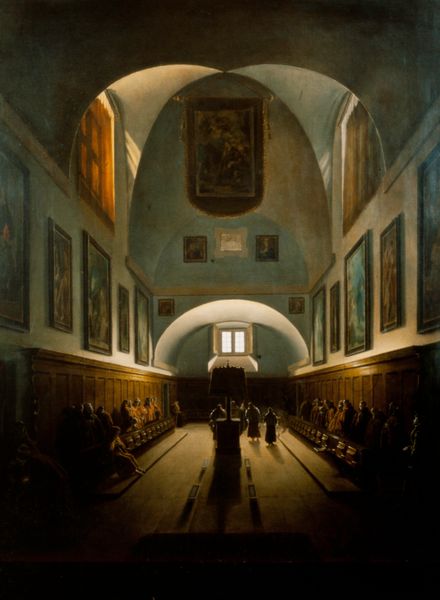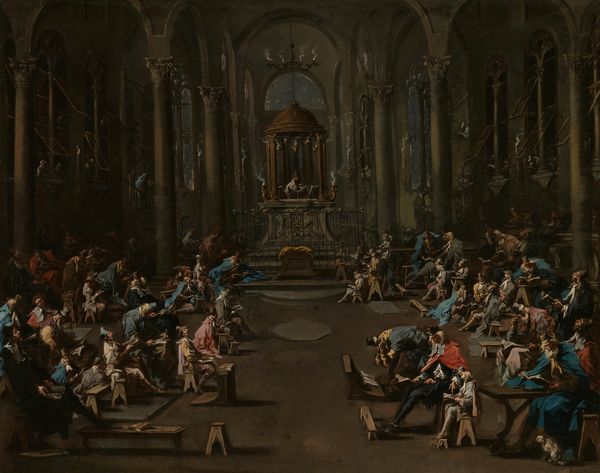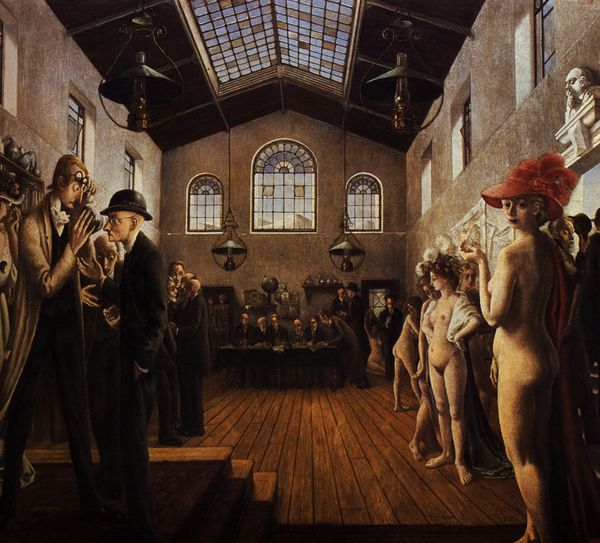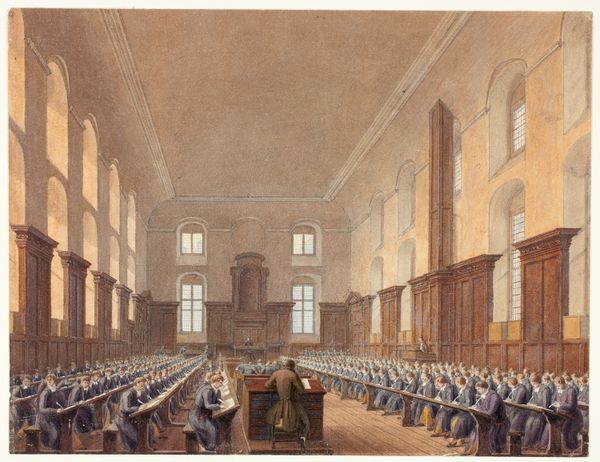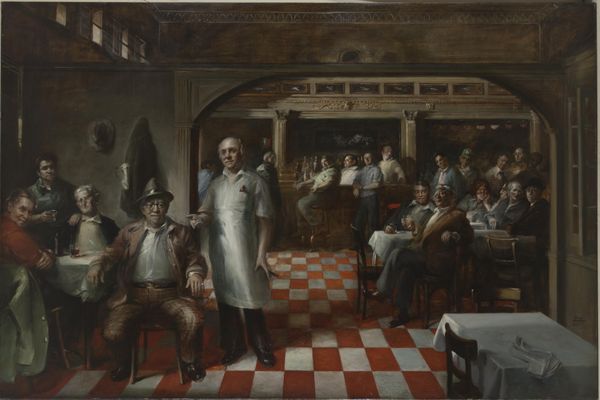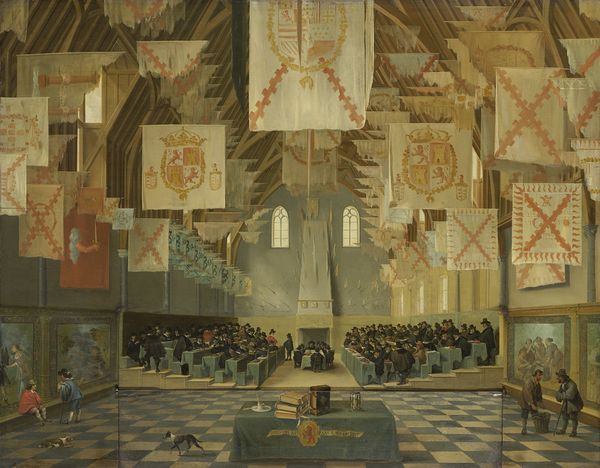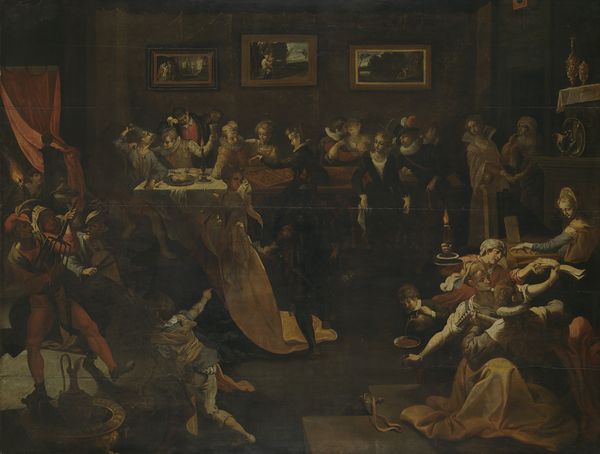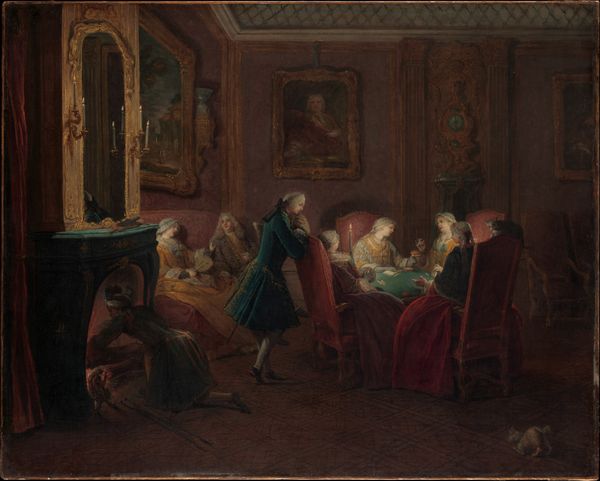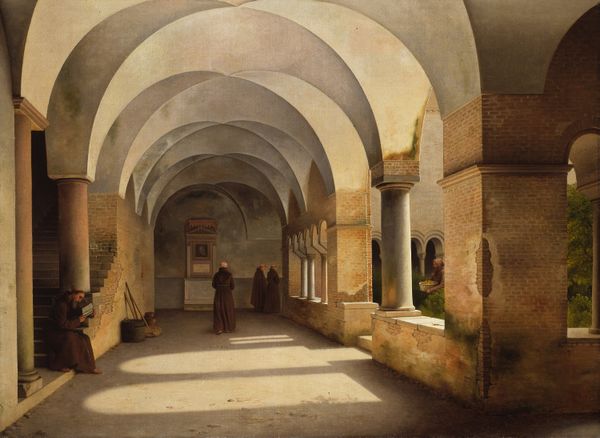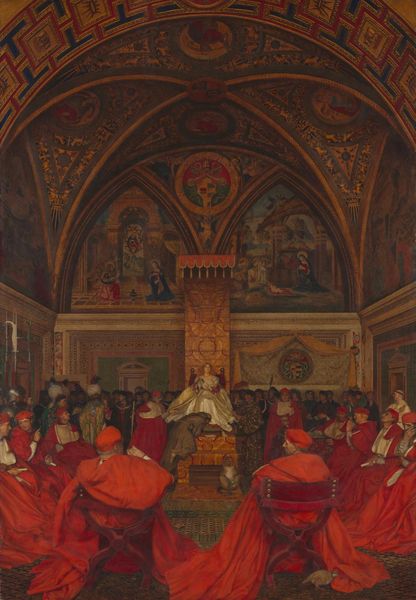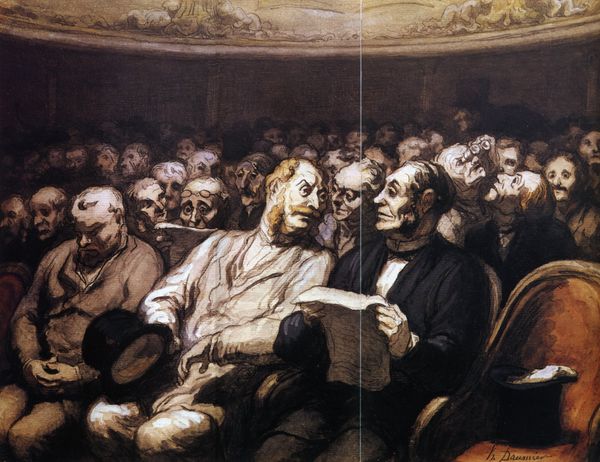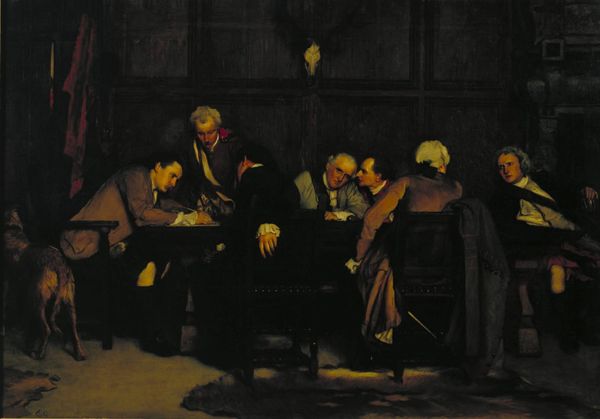
painting, oil-paint
#
painting
#
oil-paint
#
sculpture
#
genre-painting
#
history-painting
#
italian-renaissance
#
italy
#
realism
Copyright: Public domain
Editor: This oil painting, "Monks in the Certosa in Padua," was completed around 1850 by Vincenzo Abbati. The scene, dominated by browns and greys, feels still, quiet, almost claustrophobic. What strikes you most about its composition? Curator: Note how the architectonic rigor of the Certosa, its arches and linear pews, orders the space, yet the painter introduces subtle variations within that order. Observe, for example, the varied postures of the monks; the light modulating across their habits; the way the architecture seems to flatten the scene into a study of browns. Editor: Yes, the subdued palette definitely flattens the space. And the perspective, while seemingly accurate, adds to the feeling of constraint. Can you say more about how the structure contributes to the artwork? Curator: The repetitive lines and geometric forms of the architecture function almost like a grid. Against this rigid structure, Abbati places the figures, each subtly different. It is the tension between the abstract architectural grid and the representational treatment of the figures that generates visual interest. Note the central lectern; a symbolic nexus but also, in compositional terms, a device to pull your eye deep into the scene. Editor: I hadn't considered the lectern in that way. The way it is illuminated helps with that depth, I suppose. The balance is unexpected. Curator: Precisely. And further consider the handling of light. It is not used to create drama, as in Baroque painting, but rather to subtly reveal the forms and textures within this controlled environment. Did Abbati aim to celebrate a religious space, or examine painting itself through careful distribution of colour and volume? Editor: I initially saw a sombre scene, but your analysis shifts my perception to a sophisticated study of form. Curator: The painting invites you to move beyond surface representations and look at formal relationships between the components of an image.
Comments
No comments
Be the first to comment and join the conversation on the ultimate creative platform.
